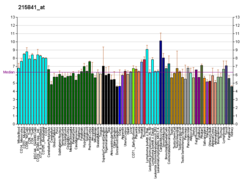| GUCA1B | |||||||||||||||||||||||||||||||||||||||||||||||||||
|---|---|---|---|---|---|---|---|---|---|---|---|---|---|---|---|---|---|---|---|---|---|---|---|---|---|---|---|---|---|---|---|---|---|---|---|---|---|---|---|---|---|---|---|---|---|---|---|---|---|---|---|
| Identifiers | |||||||||||||||||||||||||||||||||||||||||||||||||||
| Aliases | GUCA1B , GCAP2, GUCA2, RP48, guanylate cyclase activator 1B, GCAP 2 | ||||||||||||||||||||||||||||||||||||||||||||||||||
| External IDs | OMIM: 602275; MGI: 1194489; HomoloGene: 1586; GeneCards: GUCA1B; OMA:GUCA1B - orthologs | ||||||||||||||||||||||||||||||||||||||||||||||||||
| |||||||||||||||||||||||||||||||||||||||||||||||||||
| |||||||||||||||||||||||||||||||||||||||||||||||||||
| |||||||||||||||||||||||||||||||||||||||||||||||||||
| |||||||||||||||||||||||||||||||||||||||||||||||||||
| |||||||||||||||||||||||||||||||||||||||||||||||||||
| Wikidata | |||||||||||||||||||||||||||||||||||||||||||||||||||
| |||||||||||||||||||||||||||||||||||||||||||||||||||
Guanylyl cyclase-activating protein 2 is an enzyme that in humans is encoded by the GUCA1B gene. [5] [6] Alternative names: [7]
Contents
- Guanylate cyclase activator 1B
- Retinal guanylyl cyclase activator protein p24




